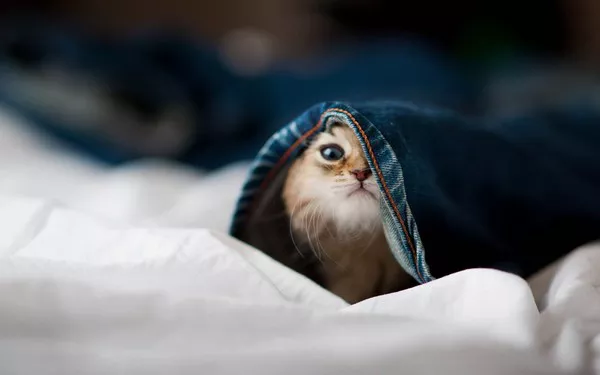Cornish Rex cats have captivated cat lovers with their distinctive appearance and playful personalities. Renowned for their curly coats, elegant bodies, and inquisitive nature, these felines stand out in the world of cat breeds. However, alongside their charm comes a notable price tag, prompting many to question: why are Cornish Rex cats so expensive? In this article, we delve into the factors that contribute to the elevated cost of Cornish Rex cats, shedding light on the intricate dynamics shaping their market value.
Rarity and Breeding Challenges:
Cornish Rex cats owe their unique appearance to a genetic mutation that affects their fur texture, resulting in soft, curly coats. This mutation is relatively rare compared to other feline breeds, making Cornish Rex cats a niche within the broader spectrum of domestic cats. Breeders face significant challenges in maintaining and enhancing this trait while ensuring the overall health and well-being of the cats.
The rarity of the Cornish Rex gene necessitates careful breeding practices to avoid genetic disorders associated with inbreeding. Responsible breeders invest considerable time, effort, and resources in selecting suitable mating pairs to preserve the breed’s distinctive features while minimizing the risk of hereditary health issues. These breeding practices contribute to the exclusivity of Cornish Rex cats and consequently influence their price point.
Quality Standards and Pedigree:
Like many purebred animals, Cornish Rex cats are subject to stringent quality standards set by breeding associations and cat registries. These standards encompass various aspects, including physical characteristics, temperament, and lineage. Cats that meet or exceed these standards are deemed to have a high pedigree, commanding higher prices in the market.
Breeders meticulously track the lineage of Cornish Rex cats, maintaining detailed records of parentage and genetic history. Kittens born from champion bloodlines or esteemed pedigrees are highly sought after by enthusiasts and collectors, further driving up their market value. Additionally, factors such as coat color, eye color, and overall conformation contribute to the perceived quality of a Cornish Rex cat and influence its price.
Health and Veterinary Care:
Ensuring the health and well-being of Cornish Rex cats is paramount for breeders and owners alike. While the breed is generally robust, certain health issues, such as hypertrophic cardiomyopathy (HCM) and patellar luxation, may occur occasionally. Responsible breeders conduct thorough health screenings and genetic testing to identify and mitigate potential risks, thereby promoting the overall health of the breed.
Veterinary care, including vaccinations, deworming, and routine check-ups, adds to the cost of raising Cornish Rex cats. Additionally, specialized grooming and dietary requirements tailored to the breed’s unique needs contribute to the ongoing expenses associated with cat ownership. The investment in preventive healthcare and quality nutrition is reflected in the price of Cornish Rex kittens, as it ensures their long-term health and vitality.
Breeder Reputation and Ethical Practices:
Reputation plays a significant role in the pricing of Cornish Rex cats. Established breeders with a track record of producing healthy, well-socialized kittens command premium prices due to their credibility and reliability. Ethical breeders prioritize the welfare of their cats above financial gain, adhering to industry best practices and ethical guidelines.
See Also:Is a Cornish Rex Right for Me?
Buyers often seek out reputable breeders who prioritize transparency, honesty, and responsible breeding practices. Such breeders provide comprehensive support and guidance to new owners, fostering a positive and enduring relationship. While the initial cost of acquiring a Cornish Rex cat from a reputable breeder may be higher, the assurance of obtaining a healthy, well-adjusted pet justifies the investment for many prospective owners.
Market Demand and Trends:
The demand for Cornish Rex cats fluctuates over time, influenced by various factors such as media exposure, celebrity endorsements, and cultural trends. Periods of heightened interest in specific breeds or traits may result in increased demand for Cornish Rex cats, driving prices upwards. Conversely, economic downturns or shifts in consumer preferences can impact market demand and subsequently affect pricing dynamics.
Social media platforms and online marketplaces have facilitated greater visibility and accessibility of Cornish Rex cats, connecting breeders with potential buyers worldwide. The globalization of the pet trade has contributed to a more dynamic and competitive market environment, with prices reflecting supply and demand dynamics across different regions.
Conclusion:
Cornish Rex cats embody a blend of elegance, intelligence, and charm that captivates cat enthusiasts around the globe. However, their unique qualities and inherent rarity contribute to a higher price point compared to other domestic cat breeds. Factors such as breeding challenges, quality standards, health considerations, breeder reputation, and market dynamics collectively influence the cost of Cornish Rex cats.
While the upfront expense of acquiring a Cornish Rex cat may seem substantial, it is important to recognize the long-term value and companionship they provide. Responsible ownership, coupled with ethical breeding practices, ensures the continued well-being and preservation of this beloved breed for generations to come.
Related Topics:

























